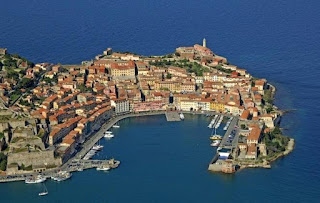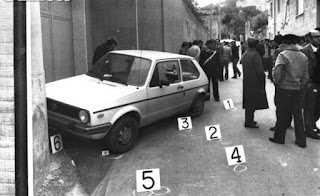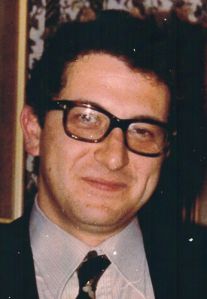Author has mastered the science of detective fiction
.jpg) |
| Marco Malvadi began his writing career with La briscola in cinque |
Malvaldi, who is a graduate in chemistry from Pisa University, has also written a travel guide about his home town with the title Scacco alle Torre (Checkmate to the Tower), which has been presented at the Pisa Book Festival. In the book, he writes a story about a nocturnal walk through the city entitled Finalmente soli (Finally Alone), which was inspired by an image taken by a professional photographer, Nicola Ughi, a fellow Pisan, who has become his official portraitist.
He began his writing career in 2007 with a mystery novel, La briscola in cinque (Game for Five), published by Sellerio Editore. The novel’s protagonist, Massimo, a barista, and the owner of a bar named BarLume, which is a play on the Italian word barlume, which means 'flicker of light', is forced into the role of investigator in the fictional seaside resort town of Pineta on the Tuscan coast.
Other books in the series followed and three have been translated into English: Il gioco delle tre carte (Three-card Monte), Il re dei giochi (The King of Games) and La carta più alta (The Highest Card).
In 2011, Malvaldi’s novel, Odore di chiuso (The Scent of Must) was published by Sellerio Editore and later published in English under the title, The Art of Killing Well. It featured Pellegrino Artusi, a renowned 19th century gastronomist from the Romagna region, as his fictional detective. The novel was awarded the Isola d’Elba Award and the Castiglioncello Prize.
 |
| Malvadi's novel The Art of Killing Well |
After graduating, Malvaldi also did research in the department of pharmacy at Pisa University and he has written several books about science. His book, Le due teste del tiranno: metodi matematici per la Libertà (The Two Heads of the Tyrant: Mathematic Methods for Freedom), published in 2017, won a 2018 Asimov award, for the best book in scientific dissemination published in Italy.
Malvaldi, whose birthday today is his 50th, has also co-authored books with Roberto Vacca, Dino Leporini, journalist and poet Ernesto Ragazzoni among many others.
Malvaldi’s partner is Samantha Bruzzone, who is also a chemist and passionate about detective fiction. Together, they have written two children’s books and in 2022 the novel, Chi si ferma e perduto (Who Stops is Lost).
.jpg) |
| Pisa's leaning tower began to tilt soon after it was built |
Pisa is world famous for its leaning tower, which Malvaldi writes about in his book Scacco alle Torre (Checkmate to the Tower). Work began on the construction of a freestanding bell tower for the Cathedral in Pisa in 1173. The tower’s famous tilt began during the building process and is believed to have been caused by the laying of inadequate foundations on ground that was too soft on one side to support the weight of the structure. The tilt got worse over the years until work had to be carried out to correct it in the 20th century. At its most extreme, the tower leaned at an angle of 5.5 degrees but since the restoration work carried out between 1990 and 2001 the tower leans at about 3.99 degrees. The tower was reopened to the public in 2001, when it was declared that it would be stable for another 300 years.
 |
| The picturesque harbour at the port of Portoferraio on the island of Elba off the Tuscan coast |
The Tuscan coast, which Malvaldi fictionalises in some of his books, has a long stretch of sandy beaches that include holiday destinations such as Viareggio, Forte dei Marmi, Catiglioncello, Follonica, Castiglione della Pescaia, Porto Ercole, Talamone, and many others. Off the coast is the island of Elba, a popular destination for holidaymakers who arrive by ferry at Portoferraio, where there is an old port and a modern seafront with hotels. The west coast of the island has sandy beaches, but the east coast is more rugged with high cliffs. Inland there are olive groves and vineyards producing the wine, Elba DOC. You can visit Napoleon’s two residences while he was in exile on the island, Palazzina Naopleonica, a modest house built around two windmills in Portoferraio, and Villa San Martino, his country house, further inland at San Martino and decorated inside with Egyptian-style frescoes.
Also on this day:
98: Trajan becomes Emperor of Rome
1861: Italy elects its first parliament
1881: The birth of mobster Frank Nitti
1901: The death of composer Giuseppe Verdi
1927: The birth of writer and novelist Giovanni Arpino
1962: The birth of musician Roberto Paci Dalò
.jpg)
.jpg)




.jpg)

.jpg)







.jpg)